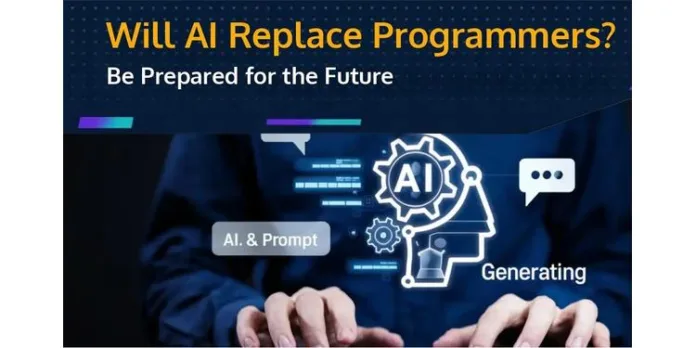In the fast-evolving world of software development, AI-generated code is quickly becoming one of the most transformative forces in tech. As artificial intelligence continues to mature, tools that can write, debug, and even optimize code are gaining popularity across startups, enterprises, and independent developers.
With advancements in large language models and machine learning, a fundamental question has emerged: Will human developers become obsolete by 2030? Or will AI serve as a powerful assistant that amplifies human potential instead of replacing it?
In this article, we dive deep into the current capabilities of AI-generated code, its impact on the developer ecosystem, and what the future may hold.
1. What is AI-Generated Code?
AI-generated code refers to software written automatically by artificial intelligence systems. These systems, trained on billions of lines of code across various languages and frameworks, can now generate working scripts, applications, and APIs with minimal human input.
Examples include:
- Code suggestions in real-time (like GitHub Copilot)
- Auto-generating boilerplate functions
- Creating entire backend services or UI components
- Debugging and identifying security flaws
- Translating code between programming languages
These tools operate based on contextual understanding and predictive modeling, allowing them to write high-quality code from natural language prompts.
2. Current AI Tools in Use
In 2025, the development community has widely adopted AI-powered coding assistants such as:
- GitHub Copilot
- Amazon CodeWhisperer
- Replit Ghostwriter
- Tabnine
- OpenAI Codex
These tools have become staples in modern IDEs, helping developers complete code faster, avoid errors, and experiment with new libraries and patterns.
🧠 What Can These Tools Do?
- Predict the next lines of code
- Create full functions or components from scratch
- Detect bugs or security issues in real time
- Suggest alternative solutions with performance improvements
The productivity gains are real—but so are the concerns about over-reliance and job security.
3. Will AI Replace Developers?
Let’s be clear: AI-generated code is not yet a replacement for developers—but it is reshaping what it means to be one.
Here’s why:
✅ Tasks AI Can Handle Well:
- Repetitive coding tasks
- Generating boilerplate code
- Writing test cases
- Simple CRUD operations
- Documentation and comments
❌ Tasks Still Requiring Humans:
- System architecture design
- Deep debugging across layers
- Creative problem-solving
- Communication with stakeholders
- Ethical and secure coding practices
AI still lacks context, real-world experience, and judgment—especially in complex projects. So, while it can take over some tasks, developers still play a vital role in strategy, planning, and execution.
4. Changing Role of Developers
Rather than disappearing, the role of the developer is evolving.
👨💻 Developers Are Becoming:
- AI Collaborators – Understanding how to prompt AI for the best results.
- Code Curators – Reviewing, refining, and validating AI-generated outputs.
- Problem Solvers – Using logic and domain knowledge to shape applications.
- Ethical Guardians – Ensuring AI-generated code doesn’t introduce bias, insecurity, or legal risk.
In essence, coding is shifting from manual writing to high-level supervision and problem-solving. Developers who adapt will thrive in this new paradigm.
5. Skills That Will Matter in the AI Era
To stay relevant and valuable, developers need to focus on skills that AI cannot easily replicate:
💡 Future-Proof Developer Skills:
- Critical thinking and systems design
- Understanding AI limitations and biases
- Cross-functional collaboration
- Security-first development
- Prompt engineering and AI literacy
Being able to instruct AI tools effectively—what’s now being called “prompt engineering”—is becoming a must-have skill, much like typing or using version control.
6. The Ethical and Legal Angle
As AI-generated code becomes widespread, it also raises new challenges:
- Intellectual Property: Who owns AI-generated code?
- Bias & Fairness: Does the AI reflect biases from its training data?
- Security: Can AI introduce unknown vulnerabilities?
Developers and organizations will need to remain vigilant. AI should assist human decision-making—not blindly replace it.
7. Looking Ahead: The Developer of 2030
By 2030, software development will likely look very different. Many everyday coding tasks may be fully automated, but this will not spell the end of the developer.
Instead, we may see roles like:
- AI-First Engineers – Professionals who build and refine AI tools.
- Prompt Architects – Experts in designing high-quality AI queries and commands.
- Human-AI Workflow Designers – Specialists in integrating AI smoothly into development pipelines.
The future developer will be a hybrid of engineer, analyst, and strategist.
Final Thoughts
AI-generated code is not here to replace developers—it’s here to empower them. Just as IDEs, compilers, and frameworks once revolutionized programming, AI is the next big leap forward. But like every tool, it must be used responsibly, ethically, and with a deep understanding of its strengths and limitations.
Rather than fearing the future, developers should embrace AI as a collaborator. In doing so, they won’t become obsolete—they’ll become irreplaceable.
